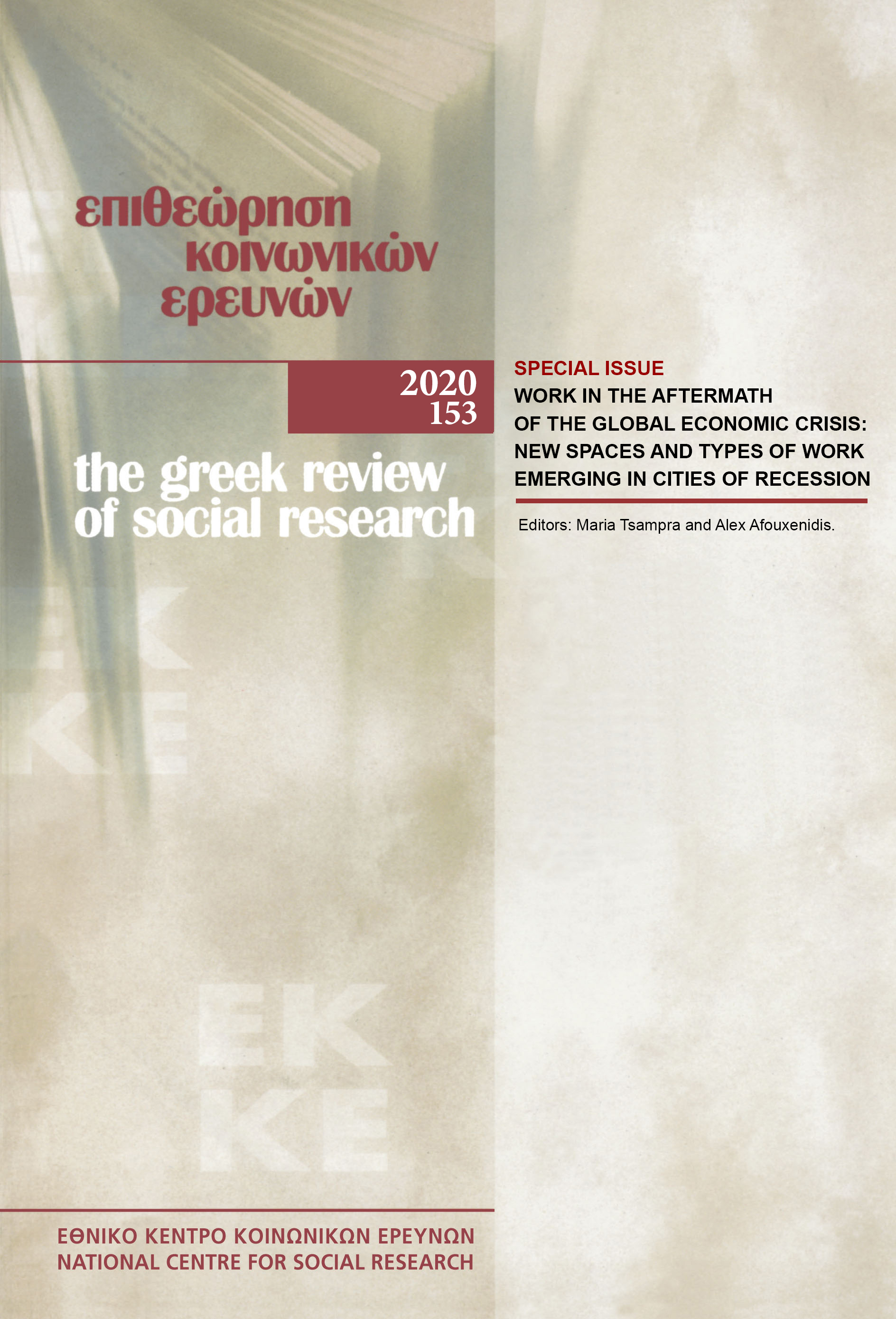Creative entrepreneurship and urban space: Exploring the location preferences of creative professionals in Αthens during the economic recession

Abstract
Academic scholarship has scrutinised the triangle connecting creativity, locality and economic activity in three ways. First, the clustering of firms has been found to promote creativity in an urban environment (cf. clustering theories). Second, and indicating an inverse course of action, creative individuals have been found to foster the economic growth of cities by attracting employers to places where the former want to reside (cf. creative class theory). Third, the specific attributes of a location, in particular urban environments, have been shown to have a positive impact on individual creativity. Our study adds to this fascinating liaison by exploring: the economic and non-economic features that lead to designers establishing their businesses in Athens’ city centre; and the perceived direct and indirect benefits of these locational factors in relation to the creative labour of these entrepreneurs. In this way, we merge micro and macro perspectives on the relationship between creative entrepreneurship and place, but in a potentially experimental setting, given that the urban fabric in Athens had to be reconstructed after it experienced economic and social turbulence following the 2008/2009 economic crisis and the austerity measures that were the result.
Article Details
- How to Cite
-
Lavanga, M., Loots, E., Konomi, M. A., Avdikos, V., & Iliopoulou, E. (2020). Creative entrepreneurship and urban space: Exploring the location preferences of creative professionals in Αthens during the economic recession. The Greek Review of Social Research, 153, 5–36. https://doi.org/10.12681/grsr.22340
- Section
- Articles

This work is licensed under a Creative Commons Attribution-NonCommercial 4.0 International License.
Authors who publish with this journal agree to the following terms:
- Authors retain copyright and grant the journal right of first publication with the work simultaneously licensed under a Creative Commons Attribution Non-Commercial License that allows others to share the work with an acknowledgement of the work's authorship and initial publication in this journal.
- Authors are able to enter into separate, additional contractual arrangements for the non-exclusive distribution of the journal's published version of the work (e.g. post it to an institutional repository or publish it in a book), with an acknowledgement of its initial publication in this journal.
- Authors are permitted and encouraged to post their work online (preferably in institutional repositories or on their website) prior to and during the submission process, as it can lead to productive exchanges, as well as earlier and greater citation of published work (See The Effect of Open Access).


